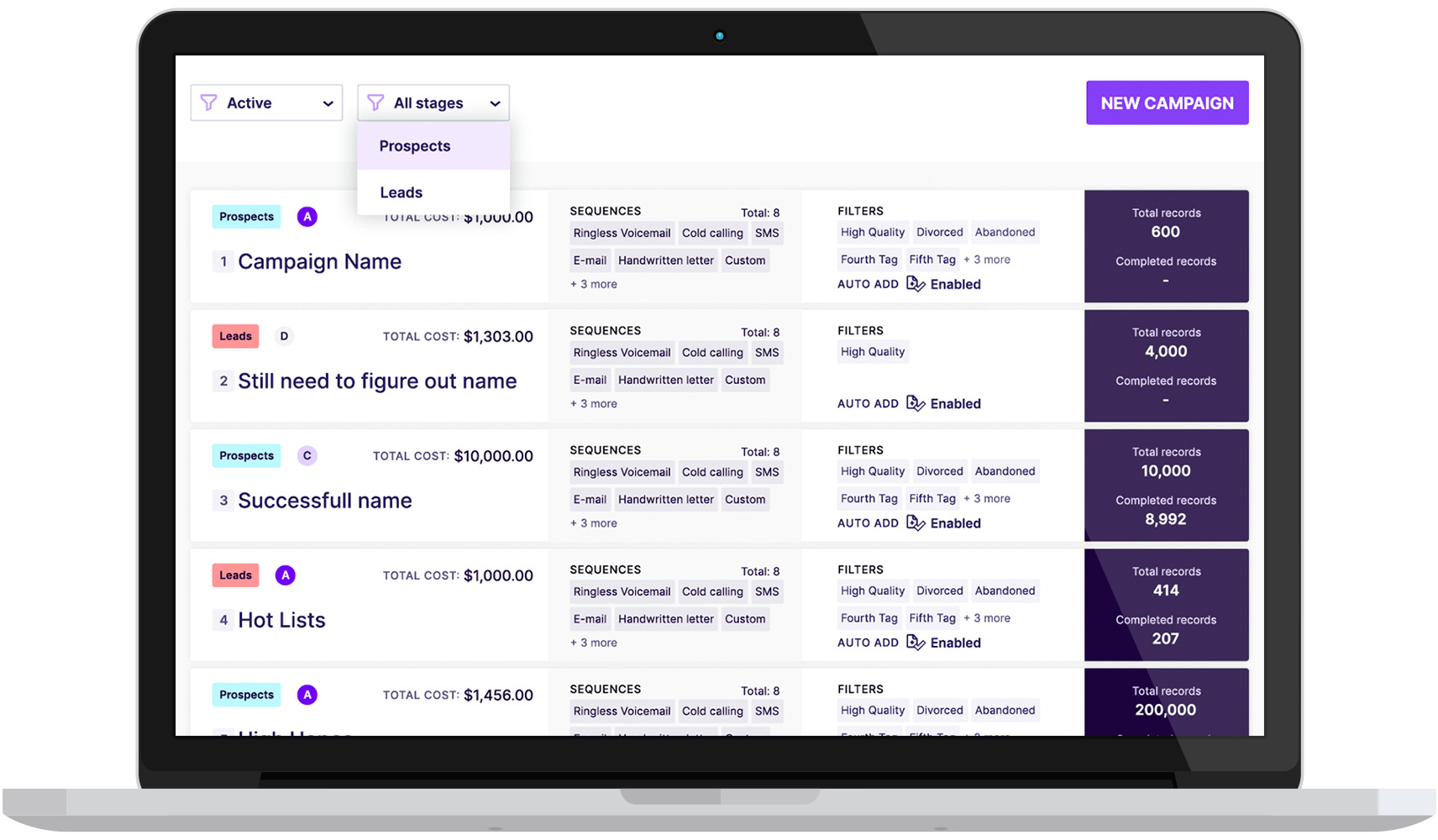If you are a real estate investor looking for off-market properties sometimes your best bet is to hit the road – literally. Driving for dollars is a lead generation strategy that has been around for years. And while it isn’t the most efficient method, it can give you an advantage over the competition.
When you drive (or walk) around a neighborhood it is easy to see which homes are occupied and cared for and which homes are not. It is this exact logic that is behind driving for dollars. When a real estate investor drives for dollars they are literally driving around a neighborhood looking for homes that fit their parameters and may have motivated sellers but they just haven’t hit the market yet.
Driving for dollars is a truly analog, active lead generation strategy. Using this method of lead generation you are making a visual inspection of homes from the outside and following up with the owners by simply knocking on the door, including them in direct mail campaigns or cold calling.
Driving for dollars is a very simple concept but it can be an important tool in uncovering investment properties before anyone else can get in on them. If your competition is solely relying on digital means of lead generation they will only see opportunities when they hit the market. Getting in there early gives you a much greater chance of securing the property.

The Pros and Cons
Like everything there are pros and cons when it comes to driving for dollars. This method of real estate lead generation shouldn’t be used exclusively but as a supplemental method to everything else you are doing to find new investment opportunities.
Pros
- Easy to do with any car or just your feet!
- Can help you understand the neighborhood and area better than looking at it online.
- You can drive for dollars anytime of the day for any amount of time.
- Can easily be offloaded to real estate bird dogs or hourly associates.
- Enables you to find properties so early you may be the only offer.
Cons
- Can be time consuming if you rely on it too much.
- Not super reliable as you may spend hours driving and not find anything worthwhile.
- Very difficult to scale.
- Can be very inefficient.
How To Make Driving For Dollars More Effective
So, you are going to embark on a driving for dollars campaign. What kind of things should you know before you hit the road? What should you prepare beforehand? Being prepared can increase the efficiency and the success of your driving for dollars effort. Do the work beforehand so you can ensure that you are making the most out of your time and only looking in areas where you would be interested in investing.
Determine Your Market and Prepare
Before you even get in the car you should know where you are going and why. Choosing a high value neighborhood is the best way to ensure that your drive will be successful. Research the area beforehand to make sure that an investment here would be worth the time and money. What is the crime rate? What is the average home value? What is the average house age? All of these are huge factors in determining if an area is a good opportunity.
Make sure you are prepared for your drive as well, with the tools you will need to take notes and photos of the homes you are looking at. You might find it easier to print out a map or you have that information accessible on your phone or laptop. Either way works, just make sure you are set up before you leave.
While you are driving make sure you keep accurate data on what areas and streets you have already visited and plan on visiting so you don’t waste time and gas revisiting the same neighborhood over and over again.
Look For The Telltale Signs
If you are driving for dollars you are looking for properties that show distinct signs of distress. Often distressed properties will come with motivated sellers who can no longer care for the home, have to deal with neglectful tenants or are just ready to offload their property and move on. Since you are only able to see the property from the outside there are certain things you should look for to determine if a property is distressed…

- Unkempt landscaping with tall grass, unruly hedges or weed overgrowth.
- Windows that are broken, old, or boarded up.
- Any kind of notice placed on the property by the town or city.
- Piled up mail, newspapers or other deliveries in the mailbox or at the front door.
- Old and badly chipped paint or siding.
- Signs of neglect like broken stairs, railings.
- No obvious sign that someone lives there.
The home itself does not have to be falling down to show signs of distress. Make sure to compare its appearance to others in the neighborhood. If it looks more unkempt and neglected than its neighbors, chances are the property is adequately distressed and might be a good opportunity. If the entire neighborhood shows some signs of distress look for what sets it apart. The property should be distressed in comparison to its neighbors.
Hire Real Estate Bird Dogs
If you don’t have the time to hit the road yourself look into hiring real estate bird dogs to do the legwork for you. Bird dogs are people who you can hire on an hourly basis that will scout neighborhoods and take notes for you so you can skip that part.
Bird dogs can also be mailmen and delivery drivers who frequent a certain neighborhood. Connect with these people and give them your business card so they can keep an eye out for any properties that may fit your criteria. If you are willing to pay a referral fee you can get some great leads from people who know the neighborhoods you are interested in.
PRO TIP: Want to find properties to fix and flip? Use Invelo's list builder to search by 100+ filters and find the perfect property to invest in.
Do Your Research
While you are moving through the neighborhood make sure you are taking notes and photos of the properties you may be interested in. Note their appearance, their neighbors and any other information that seems important. Once you are finished you will use that information to do research.
You will want to look up certain information on the properties you have found before deciding if they are worthy investments to seek out. First look for information on the owner. If you are looking for properties that are not bank-owned this is an important first step and can eliminate properties before you put too much time into them. Are they owner-occupied homes? Is there an absentee owner?
You should also look into the tax information for a property, its sale history and its equity to get a full picture of the opportunity.
Some properties will be easier to find information on than others. A few methods you can use include skip tracing, looking through public records, your assessor's website, asking neighbors or simply knocking on the door and asking the occupant.
This research will not only help you determine whether or not a property is worth pursuing but will also help you in the next step of the process…
Reach Out
You’ve done the work in finding the leads, now it is time to reach out to see if you can make an impact and garner some interest from the property owners. There are many ways you can do this depending on your preference or the information you have about the property owners.
One of the classic methods of reaching out is through direct mailings. Direct mail is a great way to introduce yourself, your business and state your intentions. You can make it personal with pictures and handwritten notations. Once you send out your first mailing you should add the property into a marketing sequence to make sure that you are consistently following up with them on a regular basis if you don’t hear back. Be sure that any direct mail is being sent to the owner of the property, not necessarily the property itself. Though it may seem passive, direct mail is an efficient and cost effective way to connect with potential sellers.

If direct mail isn’t connecting or you prefer a more personal approach you can call them (provided you can get their phone number through skip tracing) or knock on their door. This method is much more direct and can be beneficial at starting a dialogue about your interest and what you can offer. If you manage to get in touch make sure to introduce yourself as well as gauge their interest. They may have not been thinking of selling before hearing that you are interested in buying. Make sure you are persuasive and give them something to think about!
Be sure that you keep detailed notes in whatever communication method you choose. Keep track of what you sent and when you sent it as well as any response you may have received. Keep track of any call attempts including the date and the time as well as notes on calls that may have been answered
Final Thoughts
Driving for dollars can be a great way to find hidden gems before your competition. If you can’t spend time driving around neighborhoods you can easily incorporate driving for dollars into your daily routine. Maybe take a run through a new neighborhood or take a different route on your way to work. You don’t have to set out for a 4 hour drive to spot something that may be promising.







